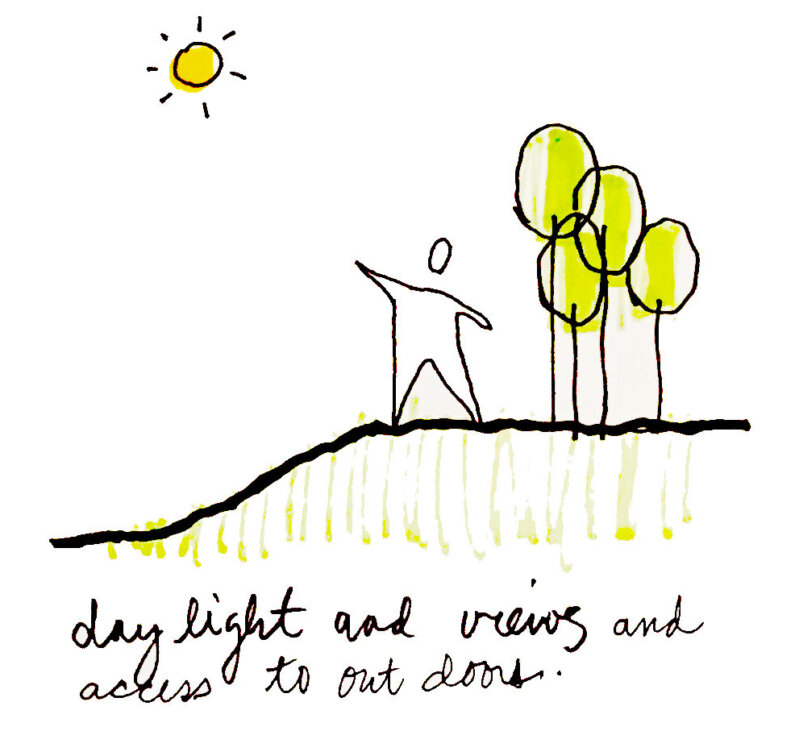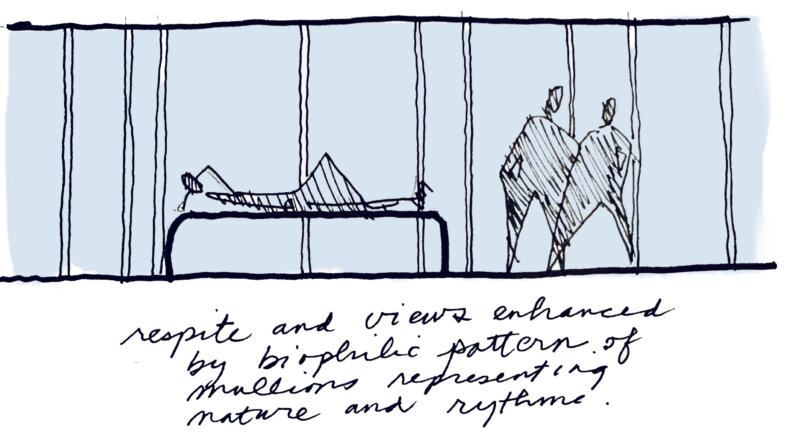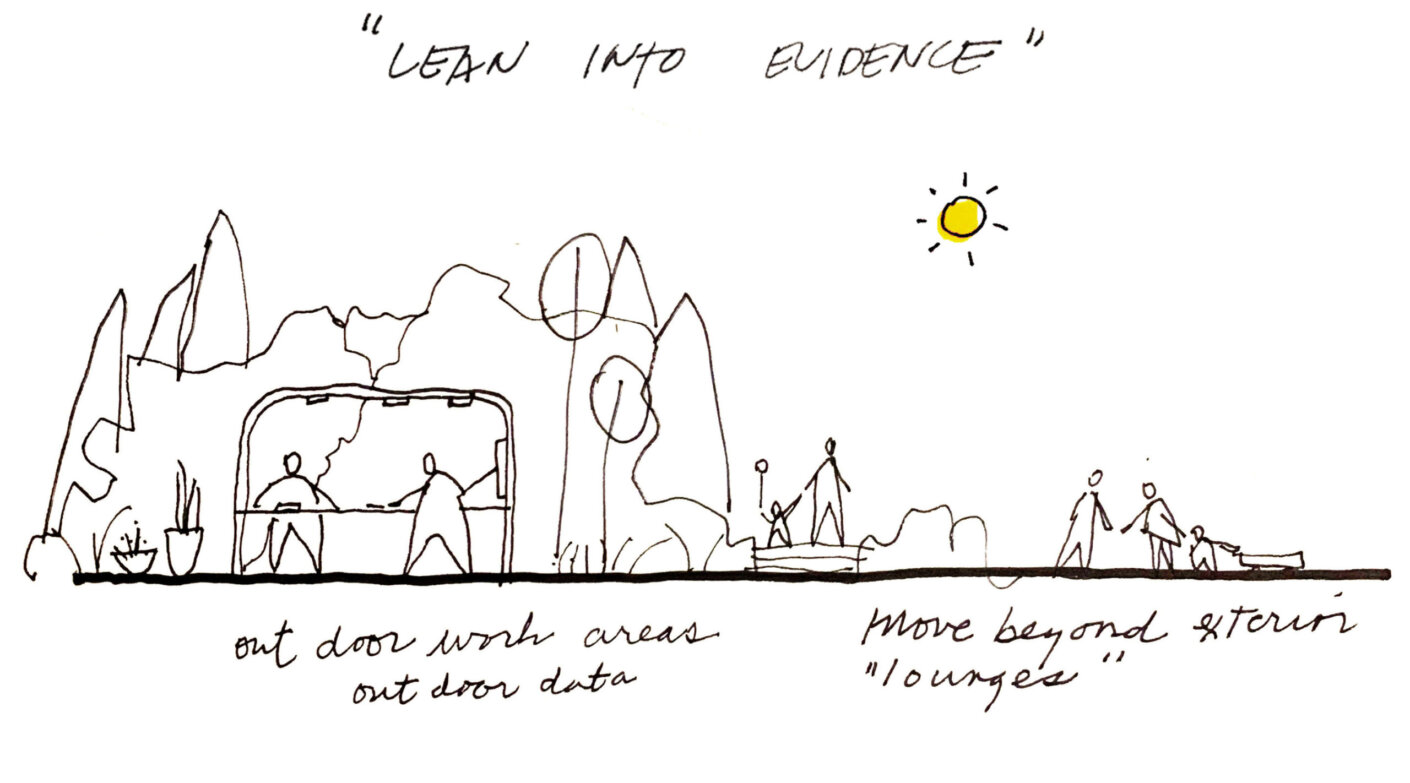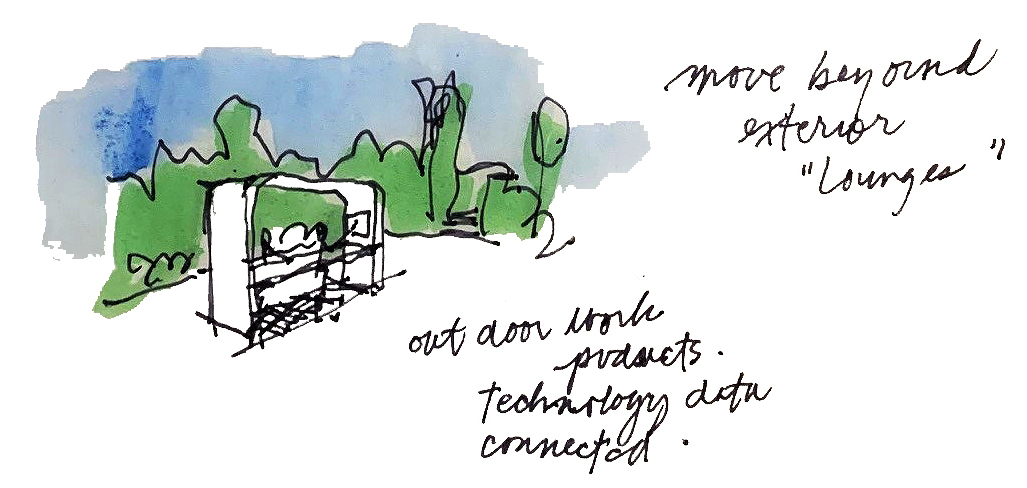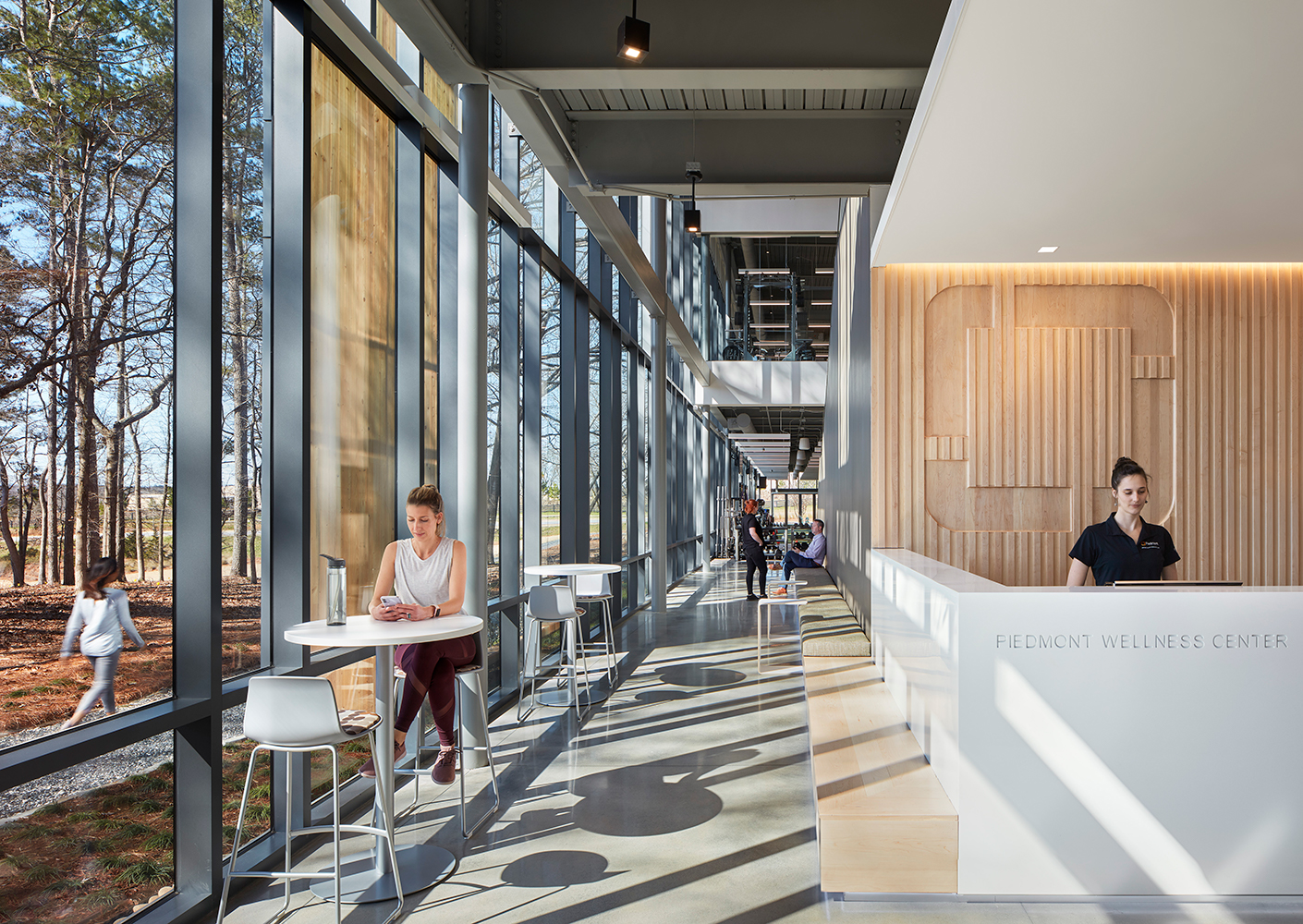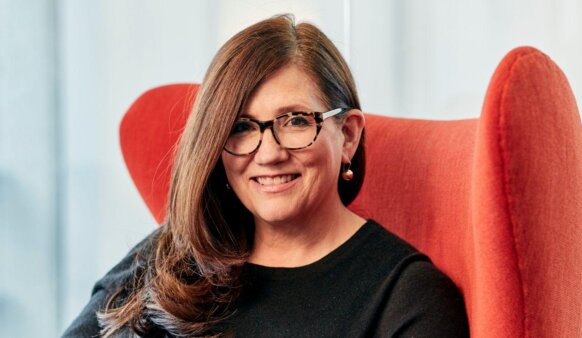HVAC engineers are the new rock stars in architecture. You’ve seen the airflow diagram of that Guangzhou restaurant by now. The one showing how nine people were infected with COVID-19 by an asymptomatic diner seated near the air-conditioner? Translating that reality into the hospital space, the engineers among us are pursuing ideas like headwalls that pull air directly up and back from the patient’s hospital bed. This sort of thing excites me.
It’s exciting because moments like this clarify what is essential and drive forward-thinking solutions and products to address those needs. In this particular moment, the solutions and products will support wellness, protect us, and do no harm in the spaces I happen to care most about: healthcare spaces. Yet this moment has also clarified how sacred our physical spaces are. Just as important as perfecting a product that serves real needs for human health is creating beautiful, serene settings that extend into the outdoor landscape.
